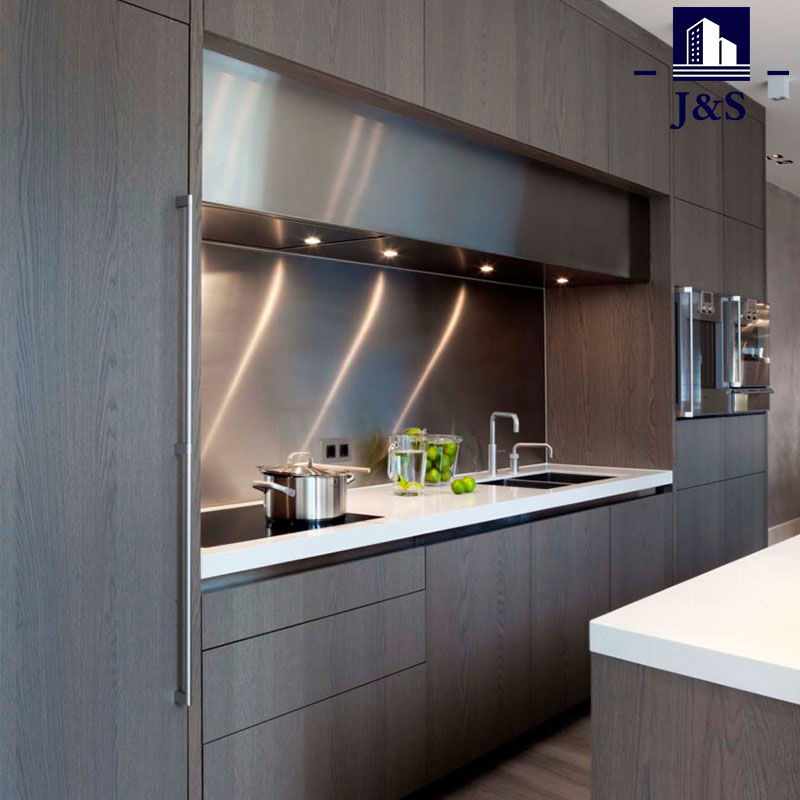Crafting Elegance: The Manufacturing Journey of Acrylic Panel Kitchen Doors
2023-12-12
Introduction:
The allure of a stylish and modern kitchen often begins with the cabinet doors, and acrylic panel kitchen doors have become synonymous with contemporary sophistication. Behind the seamless and glossy facade lies a meticulous manufacturing process that transforms raw materials into sleek design elements. In this blog, we will take a journey through the key steps involved in the production of acrylic panel kitchen doors, unraveling the craftsmanship that brings these elegant components to life.
Step 1: Material Selection and Preparation
1. Selection of Substrate Material:
- The process begins with the choice of a stable and uniform substrate material, typically Medium-Density Fiberboard (MDF) or Particleboard. This engineered wood provides a solid foundation for the acrylic laminate.
2. Preparing the Substrate:
- The selected substrate is cut into the desired shapes and sizes for the cabinet doors. Precision is crucial at this stage to ensure consistency in dimensions.
Step 2: Applying the Acrylic Laminate
3. Co-Extrusion Process:
- The acrylic laminate is applied to the substrate using a co-extrusion process. In this method, two or more materials are extruded through a single die simultaneously, creating a layered structure. The bottom layer typically consists of a clear acrylic sheet, while the top layer may be colored, patterned, or textured.
4. Bonding Layers:
- The layers are bonded together under controlled conditions, ensuring a strong and permanent connection. This bonding process forms the glossy and vibrant surface characteristic of acrylic panels.
Step 3: Shaping and Designing
5. CNC Machining:
- Computer Numerical Control (CNC) machines are employed to shape the acrylic panel doors according to the desired design. CNC machining ensures precision and consistency in creating intricate profiles, cutouts, and edge details.
6. Edge Banding:
- The edges of the acrylic panel doors are carefully finished through edge banding. This process adds a protective and decorative edge to the doors, enhancing their overall aesthetics and durability.
Step 4: Protective Backing
7. Applying the Backing:
- To reinforce the structural integrity of the doors and protect against moisture, a protective backing is applied. This backing, often made from melamine or a similar material, provides an additional layer of stability.
Step 5: Quality Control
8. Inspection and Quality Assurance:
- Each acrylic panel kitchen door undergoes a thorough inspection to ensure that it meets the highest quality standards. This includes checking for uniformity in color, gloss, and dimensions. Doors that meet the criteria move forward to the next stage of production.
Step 6: Packaging and Delivery
9. Packaging:
- Once the acrylic panel kitchen doors have passed quality control, they are carefully packaged to protect them during transportation. Proper packaging safeguards against scratches, dents, or any potential damage.
10. Delivery to Suppliers and Retailers:
- The finished acrylic panel doors are then shipped to suppliers, retailers, or directly to customers. The doors are ready to be integrated into kitchens, adding a touch of modern elegance to the living space.
Conclusion:
The manufacturing process of acrylic panel kitchen doors is a symphony of precision, technology, and craftsmanship. From the selection of materials to the meticulous shaping, bonding, and finishing, each step plays a crucial role in creating doors that marry aesthetics with durability. As these elegant components find their way into kitchens around the world, the manufacturing journey underscores the commitment to delivering quality and style in every acrylic panel kitchen door.



